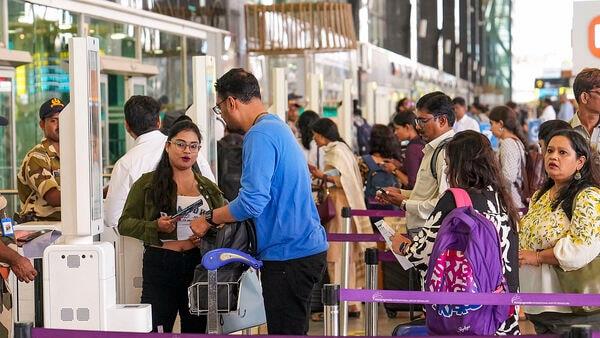
Why September Will Be A Watershed Moment For Bengaluru Airport
Data shared by Cirium - an aviation analytics company, exclusively for this article, shows two interesting trends. First, Bengaluru crosses Mumbai in terms of domestic departures, and second, Bengaluru offers more international seats than Kochi - both in the month of September. While it may have partially benefited from the lack of growth at Delhi and Mumbai airports for airlines, there is no denying the fact that the airport has come a long way in terms of both operations and design since it first opened with a small box-like terminal which was saturated immediately.
Beating Mumbai in domestic departuresCome September, Bengaluru will have 2,379 weekly domestic departures. These will be 54 more than Mumbai which would have 2,325 weekly domestic departures. In July, the difference between Bengaluru and Mumbai is 110 flights. Bengaluru is seeing rapid growth in flights with deployment by both IndiGo and Air India group airlines in August and September. This comes amidst planned additions by IndiGo to Goa, Ahmedabad, Varanasi and Kochi while Air India Express expands to Vijayawada, Trivandrum, Varanasi and Pune.
Also Read: Delhi airport wants to increase international traffic capacity by 40-50%
The first indication that this would happen was around during the pandemic when restrictions in Maharashtra and a higher number of COVID cases meant that travel was muted from Mumbai and Bengaluru reported far higher departures and passengers for a few months, but under a different set of conditions which had seen central government restrictions and in addition to that, some from respective states.
The slim lead in weekly domestic departures is likely to grow over the next few months as Mumbai struggles to allocate new slots and Bengaluru remains one of the handful of metro airports which has capacity both on terminal and runway side for most hours of the day, thanks to its second runway and second terminal. For Mumbai, this will be the second loss after losing the busiest airport tag to Delhi in 2008-09. However, Mumbai will still have a significant lead in terms of seats on offer with the airport offering 20,730 more seats than Bengaluru or close to 3,000 seats per day. This means it will take time for Bengaluru traffic to cross Mumbai traffic. This difference is because Bengaluru might have higher departures but it has quite a few on the ATRs which have lesser capacity than the A320 /B737 families and Mumbai has very limited turboprop operations. On the contrary, airlines have deployed aircraft with higher capacity like the A321s by IndiGo and some flights on the widebody aircraft by Air India to have more seats at the airport, which has very limited scope to allocate more slots.
Beating Kochi in international seatsTowards the end of August, Bengaluru will see a slight increase in international seats over Kochi. Add to that the increase led by Air India (to London Gatwick), IndiGo and Air India Express (to Abu Dhabi) and the seat count crosses that of Kochi - which is also seeing a minor increase in capacity.
Also Read: Air India to develop Bengaluru airport as hub for southern India
Unlike domestic, where Bengaluru will have more departures but fewer seats, on the international side, it will be the opposite. It will have more seats on offer than Kochi but fewer departures because Kochi has a lot of narrow-body aircraft traffic to the Gulf, while Bengaluru's growth is driven by a mix of widebody and narrowbody. The average seats per departure at Kochi would be 61,533, while that at Bengaluru would be 64,639, a lead of 3,106 seats over Kochi.
Thus, in the case of international flights, Bengaluru will quickly surpass Kochi to occupy the fourth position in International traffic, with the first three being Delhi, Mumbai and Chennai. Bengaluru has an average of 236 seats per departure on an average, while Kochi has 194 seats per departure. Chennai, on the other hand, has 198 seats per departure. This will cement Bengaluru in fourth position before it can consolidate and think of bypassing Chennai.
Tail NoteThe Government of Karnataka is talking about a second airport for Bengaluru. From having to repair its runways twice, expanding faster than what the master plan suggested and waiting for metro connectivity for over a decade - the challenges faced by Bengaluru's Kempegowda International Airport are countless. However, the benefit of being in a city which is growing rapidly with disposable income and capacity at the airport makes Bengaluru unique amongst the three southern metros of Chennai, Hyderabad and Bengaluru.
Also Read: Bengaluru's Kempegowda International Airport scraps plan to charge entry fee for vehicles accessing Terminals 1 and 2
With both Navi Mumbai and Jewar coming up in 2025, there will be another opportunity for Bengaluru to grow with flights from these two airports in addition to the existing ones serving the city. Legal Disclaimer:
MENAFN provides the
information “as is” without warranty of any kind. We do not accept
any responsibility or liability for the accuracy, content, images,
videos, licenses, completeness, legality, or reliability of the information
contained in this article. If you have any complaints or copyright
issues related to this article, kindly contact the provider above.























Comments
No comment